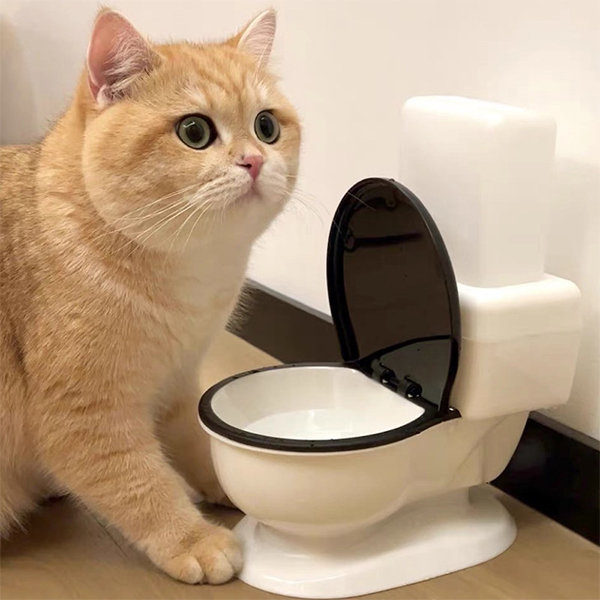Dangers of Flushing Cat Poop in Your Toilet - Precautionary Steps
Dangers of Flushing Cat Poop in Your Toilet - Precautionary Steps
Blog Article
Have you been searching for answers concerning Can You Flush Cat Poop Down The Toilet??

Intro
As pet cat proprietors, it's essential to be mindful of exactly how we throw away our feline friends' waste. While it might seem convenient to flush feline poop down the bathroom, this method can have destructive effects for both the setting and human wellness.
Ecological Impact
Purging pet cat poop presents harmful pathogens and parasites into the supply of water, positioning a significant risk to aquatic ecosystems. These contaminants can negatively impact aquatic life and compromise water quality.
Health Risks
In addition to environmental problems, purging pet cat waste can additionally present health and wellness threats to human beings. Pet cat feces might consist of Toxoplasma gondii, a parasite that can cause toxoplasmosis-- a possibly extreme health problem, particularly for pregnant females and individuals with weakened immune systems.
Alternatives to Flushing
Fortunately, there are more secure and a lot more accountable ways to throw away feline poop. Consider the following options:
1. Scoop and Dispose in Trash
The most common approach of getting rid of pet cat poop is to scoop it right into a naturally degradable bag and toss it in the garbage. Be sure to make use of a committed litter inside story and get rid of the waste promptly.
2. Usage Biodegradable Litter
Choose biodegradable feline clutter made from materials such as corn or wheat. These clutters are eco-friendly and can be safely taken care of in the garbage.
3. Bury in the Yard
If you have a lawn, consider burying pet cat waste in a designated location far from vegetable yards and water sources. Make certain to dig deep sufficient to prevent contamination of groundwater.
4. Set Up a Pet Waste Disposal System
Invest in a family pet waste disposal system particularly designed for feline waste. These systems use enzymes to break down the waste, reducing smell and ecological impact.
Final thought
Responsible pet dog possession prolongs past offering food and sanctuary-- it also includes correct waste administration. By avoiding flushing feline poop down the toilet and going with alternate disposal approaches, we can minimize our ecological impact and safeguard human wellness.
Why Can’t I Flush Cat Poop?
It Spreads a Parasite
Cats are frequently infected with a parasite called toxoplasma gondii. The parasite causes an infection called toxoplasmosis. It is usually harmless to cats. The parasite only uses cat poop as a host for its eggs. Otherwise, the cat’s immune system usually keeps the infection at low enough levels to maintain its own health. But it does not stop the develop of eggs. These eggs are tiny and surprisingly tough. They may survive for a year before they begin to grow. But that’s the problem.
Our wastewater system is not designed to deal with toxoplasmosis eggs. Instead, most eggs will flush from your toilet into sewers and wastewater management plants. After the sewage is treated for many other harmful things in it, it is typically released into local rivers, lakes, or oceans. Here, the toxoplasmosis eggs can find new hosts, including starfish, crabs, otters, and many other wildlife. For many, this is a significant risk to their health. Toxoplasmosis can also end up infecting water sources that are important for agriculture, which means our deer, pigs, and sheep can get infected too.
Is There Risk to Humans?
There can be a risk to human life from flushing cat poop down the toilet. If you do so, the parasites from your cat’s poop can end up in shellfish, game animals, or livestock. If this meat is then served raw or undercooked, the people who eat it can get sick.
In fact, according to the CDC, 40 million people in the United States are infected with toxoplasma gondii. They get it from exposure to infected seafood, or from some kind of cat poop contamination, like drinking from a stream that is contaminated or touching anything that has come into contact with cat poop. That includes just cleaning a cat litter box.
Most people who get infected with these parasites will not develop any symptoms. However, for pregnant women or for those with compromised immune systems, the parasite can cause severe health problems.
How to Handle Cat Poop
The best way to handle cat poop is actually to clean the box more often. The eggs that the parasite sheds will not become active until one to five days after the cat poops. That means that if you clean daily, you’re much less likely to come into direct contact with infectious eggs.
That said, always dispose of cat poop in the garbage and not down the toilet. Wash your hands before and after you clean the litter box, and bring the bag of poop right outside to your garbage bins.
https://trenchlesssolutionsusa.com/why-cant-i-flush-cat-poop/

I recently found that piece of writing about Don’t flush cat feces down the toilet when exploring the internet. For those who appreciated our blog post plz do not forget to pass it around. Thanks a bunch for your time. Kindly check up our blog back soon.
Show Details Report this page